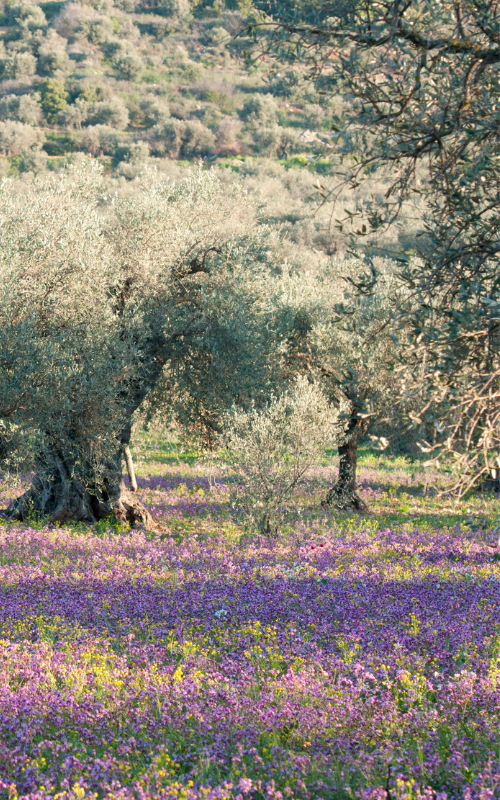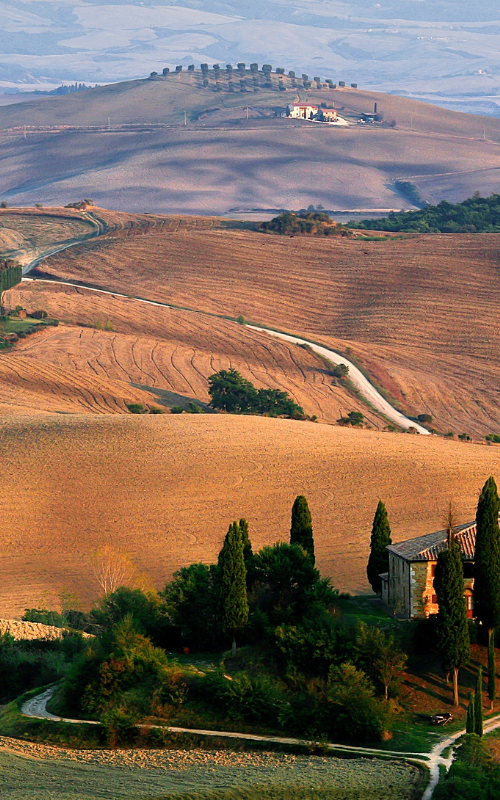The project concerns an internal area of Lazio included in the provinces of Viterbo and Rieti, south of their respective capitals, and cut by the Tiber river. The project is however open to future developments, aiming to cover the entire area of interest.

Sabina
Sabina has a thousand-year history. Since ancient times it has been a crossroads of cultures and trade along the ancient Salt Road. The name of this land in the province of Rieti derives from the historical episode of the “Rape of the Sabine Women” by the Romans. Its historical and landscape heritage extends from the hills to the Tiber Valley of Lower Sabina, on the border with Umbria, to go up the sub-Apennine mountain range (Lucretili Mountains and Carseolani Mountains) on the border with Abruzzo.
Protected natural areas and unaltered ecosystems preserve an invaluable heritage of biodiversity, such as some unique floral species, among mountains, rivers, streams, and lakes (Lago del Salto and Lago del Turano), natural reserves (Tevere-Farfa and Monte Navegna and Monte Cervia) and paths such as the Natural Parks Path. A land permeated with sacredness: even today we can feel the soul of the ancient cult of the Goddess Vacuna, the mother goddess of fertility and nature, known as “la Tacita”, as the historian Pliny defined her “silent, incorruptible and alone intelligible”, but also the spiritual essence of Christianity. Precisely in these places Saint Francis created the first living nativity scene of Christianity in 1223, the same year in which he wrote the definitive Rule of the Order and, probably, the Canticle of the Creatures.
In the province there is the Sacred Valley where the Way of St. Francis and the Way of St. Benedict intersect: the sense of the sacred intimately and intrinsically pervades nature, accompanying man’s strenuous work over the centuries in working the land, day after day, season after season. It was the favorite land of the Roman patricians, who built their villas where they retreated to dedicate themselves to idleness and cultivation. The poet Horace found inspiration in these campaigns. The villa in the archaeological area of the small center of Vacone has been attributed to him. Grain, oil and wine were ferried along the Tiber River, loaded onto boats bound for Rome. Between settlements of ancient Roman villas and castras, the history of Sabina was renewed in the Middle Ages, under the aegis of the Church and feudal nobles, with thirteenth century and Renaissance fortresses, from which the ancient villages that characterize these places were born, the scene of sieges and bitter battles between nobles, ecclesiastical troops and Saracen attacks.
In this land there are the Benedictine Abbey of Farfa, where Charlemagne stopped in the 19th century during his journey to Rome, the ancient Sanctuary of Santa Maria del Vescovio, the Sanctuary of San Francesco, monasteries, churches, and hermitages (Eremo di San Michele or San Cataldo). The province of Rieti has preserved its agricultural vocation with organic farms and local products. Pastures and crops, DOP oil, the green gold of Sabina, DOC and IGT white and red wines. Culinary traditions and typical recipes linked to seasonal productions, the grape harvest, the harvesting of olives, chestnuts, and truffles. Pasta still made by hand such as stringozzi and strozzapreti: one of the most famous typical Italian dishes in the world, namely “Pasta all’Amatriciana”.
From the point of view of outdoor and sporting activities, Sabina offers a variety of hiking routes along nature reserves, where you can practice birdwatching and observe wildlife with expert guides; offers bridle paths for horseback riding, motocross, or mountain bike trails; rivers, streams and lakes for sport fishing and activities such as canoeing, sailing, rafting, climbing cliffs and caves for speleology.
There are also spas with bicarbonate-sulfur waters. Finally, among the curiosities, Piazza San Rufo or San Ruffo in Rieti is the center of Italy according to an ancient Renaissance tradition dating back to Latin literature, which placed the Umbilicus Italiae in the Rieti area.
Tuscia
Crossed by the Cassia consular roads and closed to the east by the Tiber, it is an area with great historical-natural resources, corresponding to the province of Viterbo in the north of Lazio, which in the southern part also includes the area of the far north of the province of Rome , surrounding the area of Lake Bracciano. it is the ancient land where not only the Etruscan peoples but also the Falisci prospered, favored by the powerful Farnese but also by other noble families, including the Ruspoli. The environmental value of the territory is given by the presence of numerous parks and protected areas, the Regional Natural Park of Bracciano Martignano, the Regional Nature Reserve of Lake Vico, the Corchiano Gorges, the Natural Monument of the Valleys of the Via Francigena in Capranica, the Treja Valley Regional Natural Park. The ancient Monte Cimino beech forest, in Soriano del Cimino, is a UNESCO natural heritage site. The area is characterized by widespread accommodation, with farmhouses, B&Bs, holiday homes.
From an architectural point of view, the pentagonal building of the Farnese Palace by Vignola in Caprarola certainly stands out, dominating the panorama up to Mount Soratte; the same goes for the Orsini-Odescalchi Castle in Bracciano, one of the best preserved in Italy. The ancient Falisca civilisation, which lives again in Civita Castellana in the Archaeological Museum of Agro Falisco, is not yet fully valorised even though it is the most important exhibition of the Falisca civilisation together with the Etruscan Museum of Villa Giulia in Rome.
The ceramics for which the ancient inhabitants of Faleria were known in antiquity survives today in the Ceramics District, which has its hub in the modern city of Civita Castellana. Also worth mentioning is the Ruspoli Castle in Vignanello.
The variety of typical products is extraordinary: hazelnuts and chestnuts from the Cimini Mountains, oil and wine. Typical recipes include Fritellone from Civita Castellana, Easter pizza from Tuscia (sweet and cheesy), chickpea soup with chestnuts and chicory, pecorino and porchetta from Viterbo, beans with meat from Fabrica di Roma, ham from Monti Cimini, porchetta from Viterbo, and Vejano flame pizza.
The major folkloristic events in the area belong to the peasant world but also to devotion: the hazelnut festival of Caprarola, the carnival of the red noses of Ronciglione, the feast of the Saints Euphizio and Filippo Neri of Carbognano, the chestnut festival of Canepina and the ceciarello festival of Vejano.




